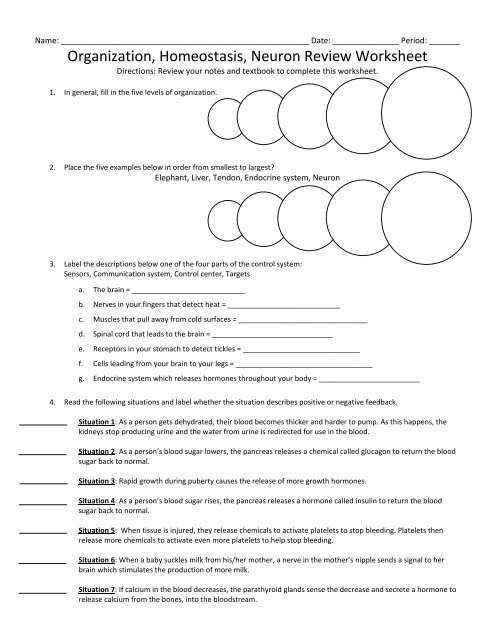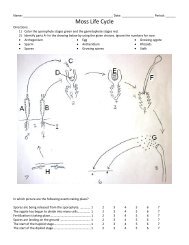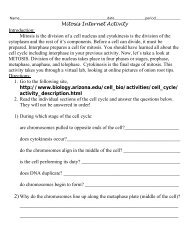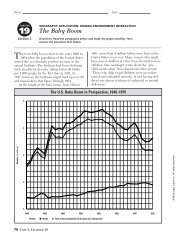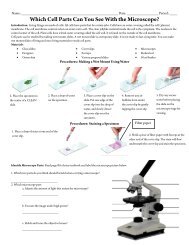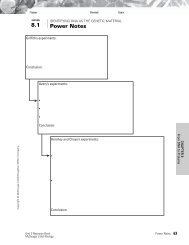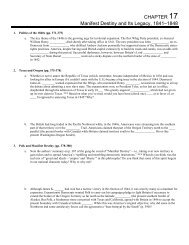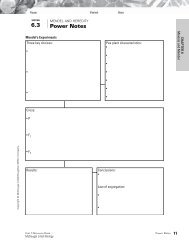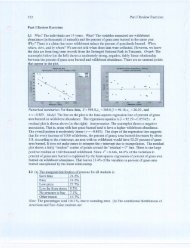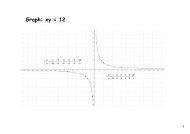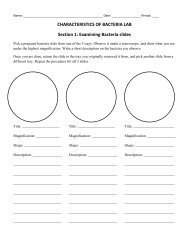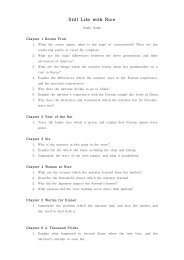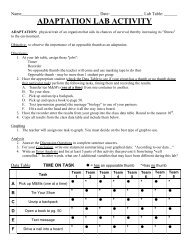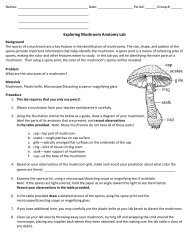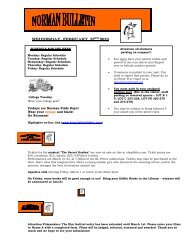Organization, Homeostasis, Neuron Review Worksheet
Organization, Homeostasis, Neuron Review Worksheet
Organization, Homeostasis, Neuron Review Worksheet
You also want an ePaper? Increase the reach of your titles
YUMPU automatically turns print PDFs into web optimized ePapers that Google loves.
Name: ________________________________________________________ Date: _______________ Period: _______<br />
<strong>Organization</strong>, <strong>Homeostasis</strong>, <strong>Neuron</strong> <strong>Review</strong> <strong>Worksheet</strong><br />
Directions: <strong>Review</strong> your notes and textbook to complete this worksheet.<br />
1. In general, fill in the five levels of organization.<br />
2. Place the five examples below in order from smallest to largest?<br />
Elephant, Liver, Tendon, Endocrine system, <strong>Neuron</strong><br />
3. Label the descriptions below one of the four parts of the control system:<br />
Sensors, Communication system, Control center, Targets<br />
a. The brain = ____________________________<br />
b. Nerves in your fingers that detect heat = ____________________________<br />
c. Muscles that pull away from cold surfaces = ________________________________<br />
d. Spinal cord that leads to the brain = ______________________________<br />
e. Receptors in your stomach to detect tickles = _____________________________<br />
f. Cells leading from your brain to your legs = __________________________________<br />
g. Endocrine system which releases hormones throughout your body = _________________________<br />
4. Read the following situations and label whether the situation describes positive or negative feedback.<br />
Situation 1: As a person gets dehydrated, their blood becomes thicker and harder to pump. As this happens, the<br />
kidneys stop producing urine and the water from urine is redirected for use in the blood.<br />
Situation 2: As a person’s blood sugar lowers, the pancreas releases a chemical called glucagon to return the blood<br />
sugar back to normal.<br />
Situation 3: Rapid growth during puberty causes the release of more growth hormones.<br />
Situation 4: As a person’s blood sugar rises, the pancreas releases a hormone called insulin to return the blood<br />
sugar back to normal.<br />
Situation 5: When tissue is injured, they release chemicals to activate platelets to stop bleeding. Platelets then<br />
release more chemicals to activate even more platelets to help stop bleeding.<br />
Situation 6: When a baby suckles milk from his/her mother, a nerve in the mother’s nipple sends a signal to her<br />
brain which stimulates the production of more milk.<br />
Situation 7: If calcium in the blood decreases, the parathyroid glands sense the decrease and secrete a hormone to<br />
release calcium from the bones, into the bloodstream.
5. Label the drawing above with the words (one choice<br />
will not be used):<br />
Axon, Synapse, Cell body, Action potential, Dendrites<br />
6. Neurotransmitters are released in which area? _______<br />
7. Which area contains the majority of the organelles<br />
found within the cell? __________<br />
<strong>Neuron</strong> Structure<br />
8. Which area leads away from the cell body? __________<br />
9. Vesicles are released from cells in which area? _______<br />
10. Electrical impulses are converted into chemical<br />
molecules in which area? _________<br />
11. Which area leads towards the cell body? __________<br />
Action Potential: Examine the two neurons below.<br />
12. If the impulse is traveling from cell A to cell B, cell A<br />
would be the:<br />
a. Dendrite c. Cell body<br />
b. Axon terminal d. Synapse<br />
13. If the impulse is traveling from cell A to cell B, cell B would<br />
be the:<br />
a. Dendrite c. Cell body<br />
b. Axon terminal d. Synapse<br />
14. In which area is an impulse releasing neurotransmitters?<br />
1 2 3 4 5<br />
15. Which area shows the vesicles?<br />
1 2 3 4 5<br />
16. Which area shows the dendrite receptors?<br />
1 2 3 4 5<br />
17. Which area shows the synapse?<br />
1 2 3 4 5<br />
18. Which area shows a neurotransmitter molecule?<br />
1 2 3 4 5


